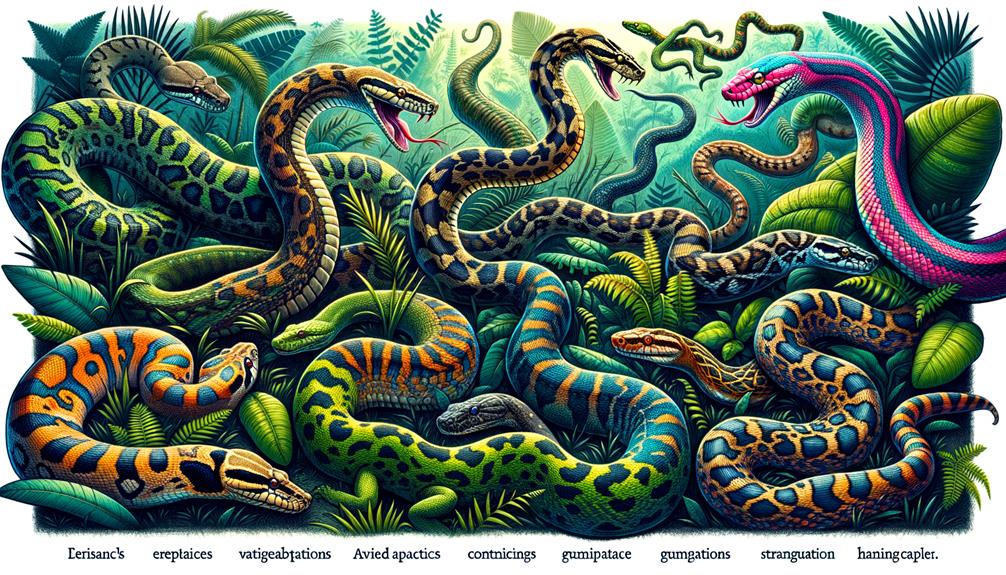I’ve always been fascinated by the incredible transformation of dinosaurs into birds. The discovery of feathered dinosaur fossils in China, such as Zhenyuanlong and Sinosauropteryx, shows that feathers initially served for insulation and display, not flight. Theropod dinosaurs, with features like three-toed feet, hollow bones, and eventually feathers, are the ancestors of modern birds. Over time, these dinosaurs evolved into lighter skeletons and wing-like forelimbs. This gradual miniaturization, exemplified by Archaeopteryx, ultimately created the agile, flying birds we see today. If you’re interested in learning more, you’ll find that ancient, ground-dwelling creatures became incredibly adept at flying.
Key Takeaways
Fossil discoveries in Liaoning, China, confirm that feathers initially evolved for insulation and display purposes, long before they were used for flight.
Some theropod dinosaurs, like dromaeosaurids, had feathered bodies and shared many skeletal traits with modern birds.
The fossils of Archaeopteryx show a mix of dinosaur and bird characteristics, providing strong evidence of the transition between the two.
As theropod dinosaurs evolved to become smaller and more agile, their bodies underwent significant changes that ultimately allowed them to fly.
Many modern bird traits, including feathers, wishbones, and air sacs, can be traced back to their dinosaur ancestors.
Feathered Dinosaurs
The discovery of feathered dinosaur fossils in China’s Liaoning Province has dramatically altered our understanding of the connection between dinosaurs and birds. The fossils of theropod dinosaurs like Zhenyuanlong and Sinosauropteryx, adorned with feathers, provide a striking illustration of the transition from dinosaur to bird. These creatures exhibit a mix of dinosaurian and avian characteristics, offering insight into how bird-like features evolved over time.
The feathers found on these theropod dinosaurs ranged from simple hairlike filaments to complex, asymmetrical structures similar to modern flight feathers. This variety in feather types suggests a gradual evolution, where each modification served a specific purpose. Interestingly, not all feathers were for flight in birds; some theropods, including large carnivores and small herbivores, had them likely for insulation, display, or other purposes.
The Liaoning Province fossils firmly establish birds as a subgroup of dinosaurs, tracing their origins back to a common theropod ancestor millions of years ago. Witnessing this evolutionary progression through these feathered dinosaurs offers a fascinating glimpse into the ancient world, where the earliest signs of avian life emerged.
Theropod Characteristics
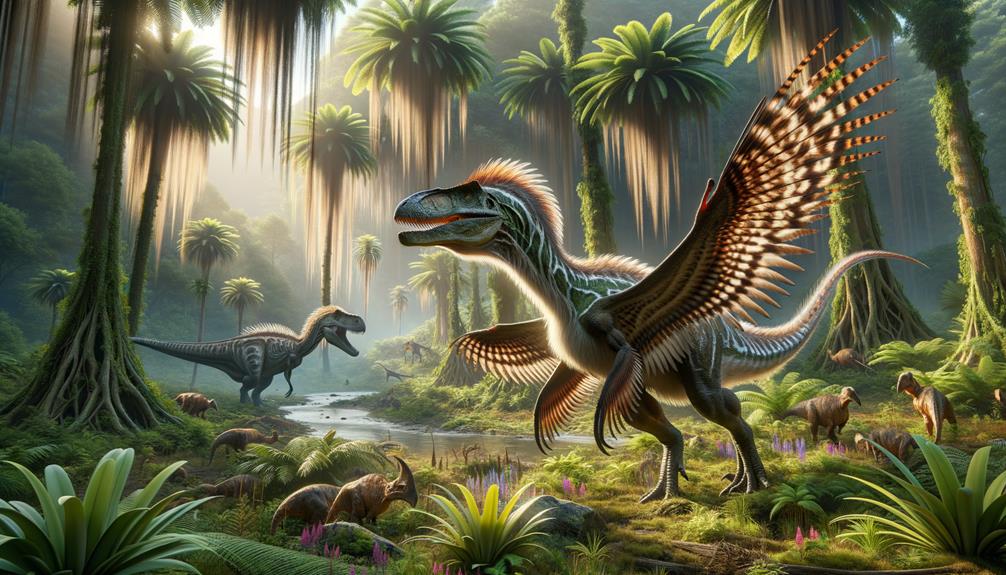
Bipedal and predatory, theropods showcased an intriguing array of characteristics that underscore their evolutionary link to modern birds. Ranging from the tiny, agile Deinonychus to the colossal Tyrannosaurus rex, these dinosaurs shared several skeletal features with birds. Their three-toed feet and hollow bones are prominent traits that hint at this evolutionary metamorphosis. The unique vertebral and rib cage structures found in theropods are remarkably similar to those of birds, providing pivotal evidence in the fossil record of their shared ancestry.
Feathers, initially evolved for insulation and display, became a defining feature of many theropod groups, such as dromaeosaurids and oviraptorosaurs. These feathers played a significant role in the gradual evolutionary changes that led to flight. Intermediate forms like Archaeopteryx, which display a mix of dinosaur and avian characteristics, serve as a testament to this fascinating transformation.
The fossil record meticulously documents the evolutionary journey from theropod dinosaurs to birds through gradual modifications in skeletal features. Changes in digit structure and the shoulder girdle are particularly noteworthy, as they paved the way for the development of wings. This rich fossil record illuminates the remarkable story of how theropods transitioned into the birds we see today.
Evolution of Flight
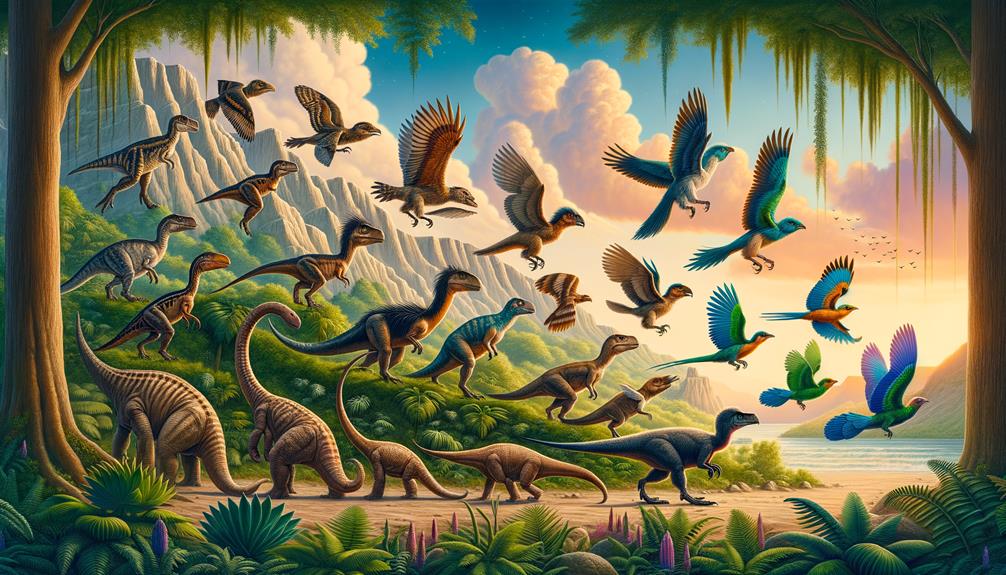
Understanding how theropods evolved to fly is a fascinating story of incremental adaptations. Birds descended from small dinosaurs, and their evolutionary history is captivating. Feathered dinosaurs from the Late Jurassic period, like Archaeopteryx, illustrate this transformation vividly.
Skeletal features played a crucial role in this process. The elongation of forelimbs into wings and the development of strong, lightweight bones were essential for flight. Over generations, wing size increased, allowing for better lift and maneuverability. Feathers, initially used for insulation or display, became more specialized for flight over time. Their asymmetrical shape was key to generating lift and enabling controlled flight.
As small theropods adapted to their environment, they were able to take to the air, opening up new ecological niches. The gradual changes in their anatomy – longer arms, specialized feathers, and refined skeletal structures – were pivotal. The evolution of flight wasn’t a sudden event, but rather a series of small, liberating steps that transformed grounded dinosaurs into the birds we know today.
Size Reduction
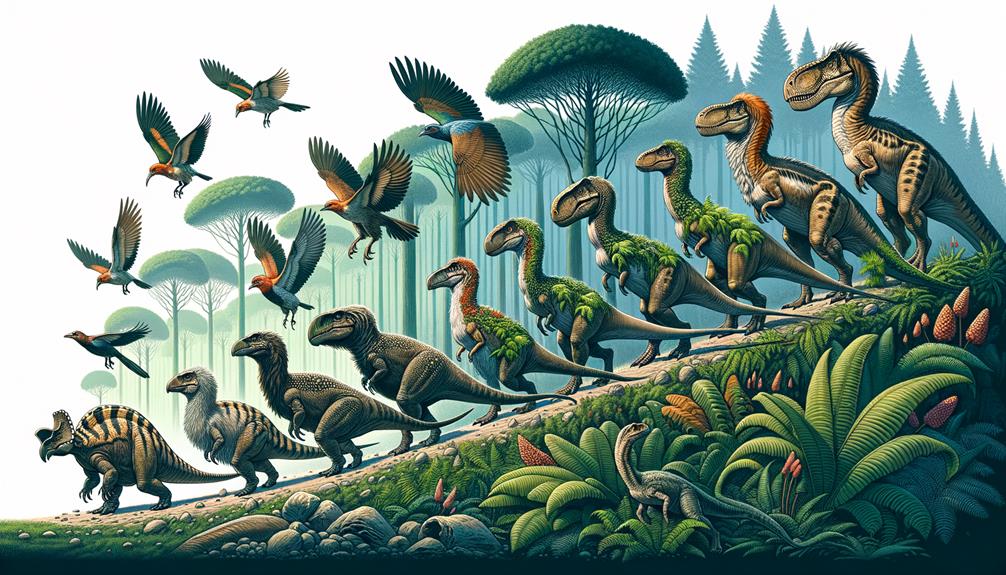
Shrinking theropods underwent significant anatomical changes that paved the way for the emergence of birds. Over millions of years, these dinosaurs evolved to become smaller and more agile, setting the stage for early species closely related to modern birds. This reduction in body size wasn’t a random event; it was a critical evolutionary trend that allowed for the development of new traits conducive to flight.
Around 1996, groundbreaking fossil discoveries like feathered Deinonychus revealed that these dinosaurs had already evolved feather-like structures long before actual birds appeared. These feathers likely provided insulation and later adapted for flight, showcasing the intricate evolutionary pathway from dinosaurs to birds.
As these theropods decreased in size, their skeletal structure underwent significant modifications, becoming lighter and more suited to the demands of aerial movement. These changes, occurring over millions of years, illustrate how the gradual reduction in body size was a necessary precursor to the evolution of flight.
The fascinating interplay of size reduction and anatomical changes highlights the dynamic process of evolution, shaping our understanding of how these ancient creatures transformed into the majestic birds we see today.
Modern Bird Traits
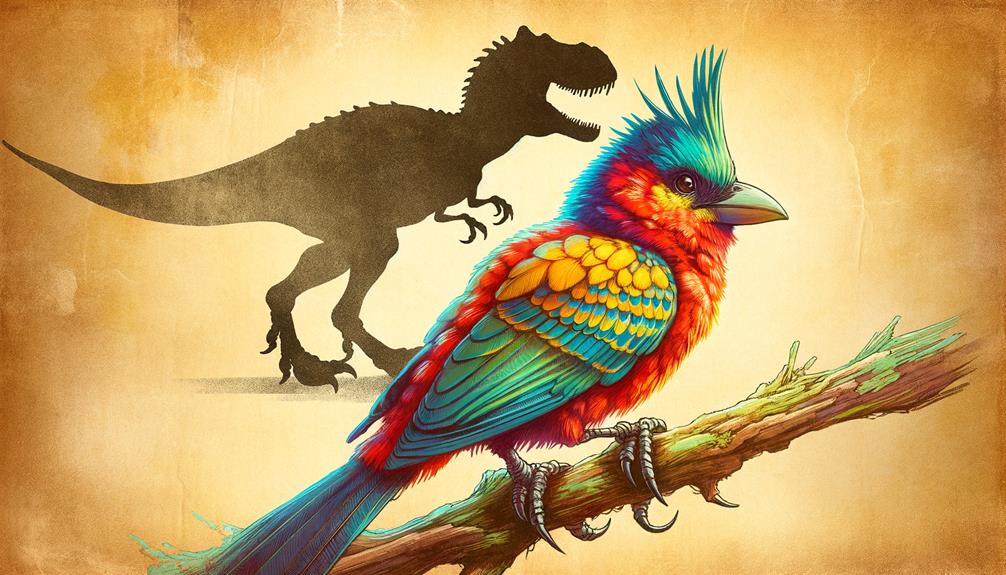
Modern bird traits can be traced back to their dinosaurian ancestors, showcasing a fascinating evolutionary journey. Feathers, wishbones, and air sacs – all characteristic features of modern birds – appeared in their dinosaur forebears long before the first birds took to the skies.
Recently discovered fossils, such as Archaeopteryx and Zhenyuanlong, display a mix of dinosaurian and avian characteristics. These intermediate forms reveal a gradual evolutionary progression from dinosaurs to birds. The fossils show that miniaturization and the development of wing-like structures were crucial steps leading to true flight.
Notably, these ancient creatures still had a long bony tail, contrasting sharply with the short, fused tailbones of living birds. This is a vivid reminder of their origins. The Museum of Natural History houses many of these invaluable specimens, connecting millions of years of evolutionary history with today’s living birds.
This gradual adaptation process highlights the richness of avian evolution, where pre-existing features were refined and adapted, culminating in the incredible diversity of modern bird species we see today.
Frequently Asked Questions
What Is the Transition Between Dinosaurs and Birds?
Unraveling the mystery of dinosaur-to-bird evolution is a complex process. Theropods gradually developed feathers, wings, and beaked jaws, ultimately giving rise to modern birds.
How Did Dinosaurs Change Into Birds?
Dinosaurs’ transformation into birds is a fascinating story. Through a process of gradual miniaturization, they developed feathers and eventually took to the skies. Two key adaptations played a significant role in this evolution: a more juvenile skull shape and developmental arrest. These changes contributed to the remarkable transition from dinosaurs to birds.
What Dinosaur Turned Into Birds?
When examining the dinosaur-to-bird evolution, theropods like Archaeopteryx and Deinonychus stand out. These species’ miniaturization, feather development, and other traits gradually gave rise to modern birds.
What Did Archaeopteryx Evolve From?
Archaeopteryx descended from small, meat-eating theropod dinosaurs, closely related to the velociraptor. It’s fascinating to think about these creatures, with their feathered wings, teeth, and long bony tail, serving as a missing link between dinosaurs and birds.



